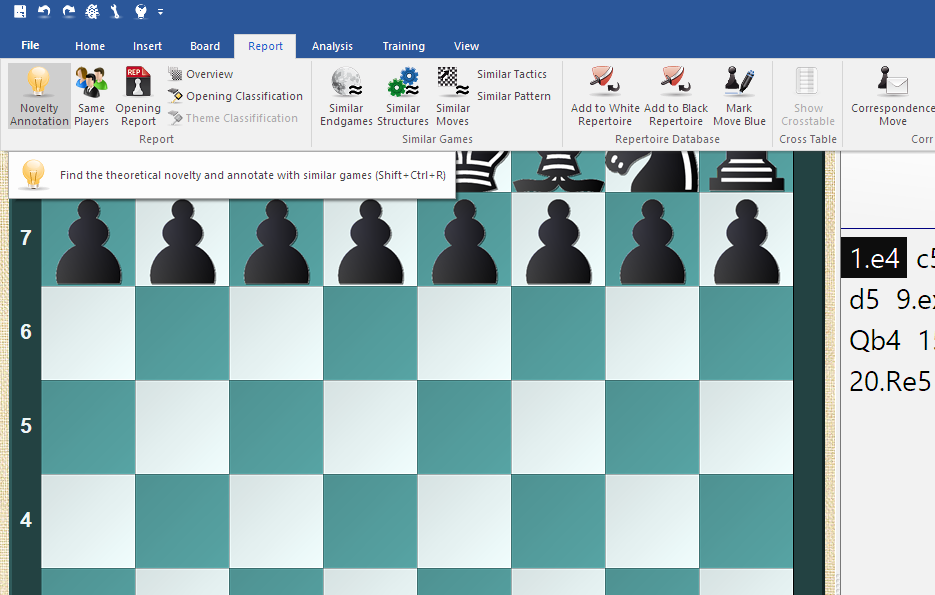Novelties For All Levels
I once reviewed a game played between a young student and his mom, who was new to chess. After the lesson, the student told his mom, "You played a novelty!" She was ecstatic. The student and his mom both continue to look for novelties as they annotate their chess games.
Ask your student to review a recent game and mark the novelty with an N.
How to do this:
- First enter and save the game into ChessBase or load the saved game.

- Access the Online Database by pressing the Enter Key. The Online Database will appear to the right of the chess board and moves list.

- Use the right arrow to move forward through the game. The Online Database quickly updates whenever the board changes. Press the left arrow key to go backwards.

- When the Online Database first shows that there are "0 games found," mark that move as a novelty.

- To mark the move as a novelty, press Ctrl + Alt + S to show the Symbol Palette. Click on the novelty symbol (N). This will place an "N" to the right of the move on the moves list.

Tip: Hovering your mouse over a button on the Symbol Palette shows a description of the symbol.

Notice that the novelty 7…Nf6 is now marked as Nf6N.
- Press Ctrl + S to save the game.
Further Analysis and Annotation
A coach and student can discuss the novelty. Was it the student or the opponent who played the novelty? Was the novelty a good move? In the position that the novelty was played, what does the Online Database show that other players have played?
The student can lightly annotate the game by writing some comments next to the move. Press Ctrl + A to open the "Enter text after move" annotation box. If the student isn’t interested in writing comments, the student can mark the move with an annotation symbol instead. For example, if the novelty is bad, the student can mark it with a question mark (?).
Initially, students should analyze their games and evaluate positions without an engine. Later they can check their work with an engine. Find the engine in Home -> Default Kibitzer or Add Kibitzer. If there are a few engines installed already, try different ones, and choose an engine with high "nodes per second," or simply avoid engines that have low nodes per second. Below you can see the Fritz 18 engine working at 2,863,000 nodes per second, labeled as 2863 kN/s.

Automatically Find Novelties
I recommend finding the novelty as described above, by looking at moves played in a game and comparing those moves to a database. This is a fundamental skill for any ChessBase user to master.
But if you want ChessBase to do the work for you, there is a feature called Novelty Annotation. ChessBase will do the database research, mark the Novelty with an N, and include useful notes in the annotation.
The ChessBase Online database is large and updated daily (except for the first few days of January). It screens out low-quality games. Pressing the Enter Key loads games almost instantly.
- Load or Enter and Save the game.
- In the menu, go to Report -> Novelty Annotation or press Shift + Ctrl + R. ChessBase will do the rest automatically.


Inventing Novelties
Many players try to invent openings or prepare novelties. Sometimes a student tells me about an invention, and I have to say something like "Great idea… it’s called the Nimzo-Indian." Students can try entering their "inventions" into ChessBase and press the Enter Key to see if others have played it before. Or the student can just casually enter in a bunch of random moves, while looking at the Online Database, and accidentally find something interesting.
If something good comes up, the student marks the move as a novelty and saves it. Then they can Direct Share it with a coach or family member. Or maybe, in the case of my student mentioned earlier, he will keep his novelty "top secret" until it’s time to unleash it against his mom.
Links
































